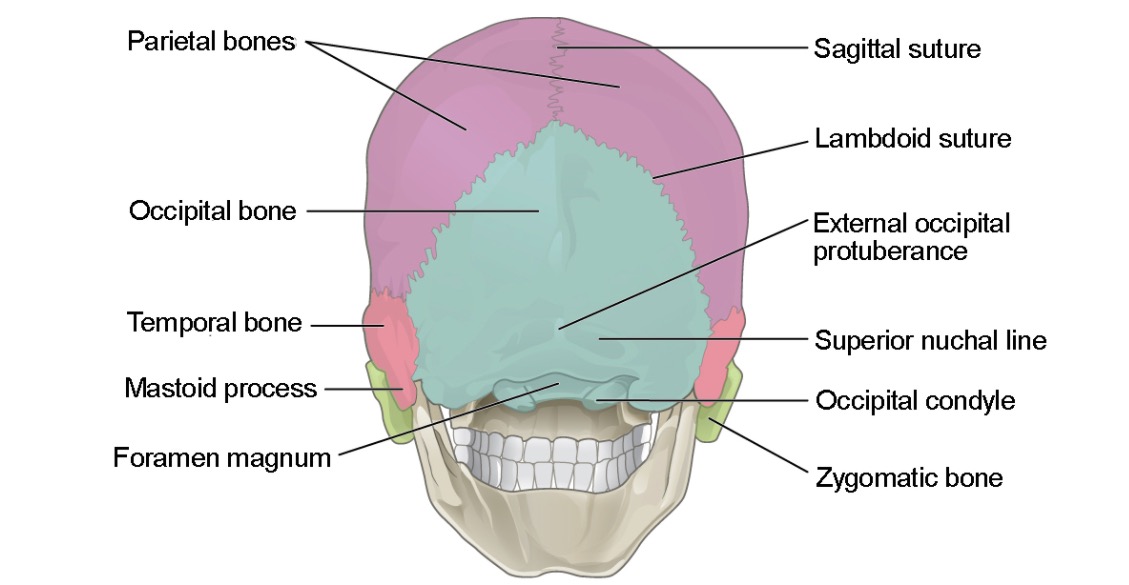Playlist
Show Playlist
Hide Playlist
Introduction to the Skull
-
Slides Anatomy Skull.pdf
-
Download Lecture Overview
00:01 Welcome to today's lecture on the skull or what's more formally known as the cranium. 00:07 The cranium refers to the bony skeleton of the head that is composed of approximately 30 bones and anatomically, it is divided into two parts. 00:18 First, we have the neural cranium, which you can see shaded in green, and then the second part of the skull is known as the visceral cranium, which you can also see now shaded in green. 00:31 Let's first discuss the neural cranium. 00:34 The neural cranium is a bony encasement that protects the brain and its associated neural vasculature. 00:41 As you can see, it is composed of eight bones in total. 00:45 We have four cellular bones and these include the frontal, the ethmoid, the sphenoid, and occipital. 00:53 And conveniently, we have four paired bones, which include the bilaterally located temporal bone and the parietal bone. 01:03 Furthermore, the neural cranium itself is subdivided into the calvaria, also known as the skullcap. 01:10 The skullcap is made up of curved flat bones, namely the frontal, parietal and occipital bones. 01:19 And the basicranium, also known as the cranial base, which is made up of the more irregular flat bones, namely the sphenoid and the temporal bones. 01:29 Now we come to the second part of the cranium, which is the visceral cranium. 01:34 The visceral cranium is also known as the facial skeleton and it contributes to the formation of the anterior part of the cranium or to put it more simply, the face. 01:45 It is primarily formed by irregular bones grouped into the bone surrounding the mouth, or more commonly referred to as the upper and lower jaws, bones of the nose and the nasal cavities, and bones that support the orbital cavities or more commonly referred to as the eye sockets. 02:08 In total, there are 14 of these irregular bones and they include two singular bones lying in the midline, the mandible, and the vomer. 02:19 We have six paired bones that occur bilaterally. 02:24 These would include the maxillae, the inferior nasal conchi, zygomatic, palatine nasal and lacrimal bones.
About the Lecture
The lecture Introduction to the Skull by Craig Canby, PhD is from the course Head and Neck Anatomy with Dr. Canby.
Included Quiz Questions
Which of the following is a paired bone within the neurocranium?
- Parietal
- Frontal
- Sphenoid
- Ethmoid
- Occipital
Customer reviews
5,0 of 5 stars
| 5 Stars |
|
5 |
| 4 Stars |
|
0 |
| 3 Stars |
|
0 |
| 2 Stars |
|
0 |
| 1 Star |
|
0 |





